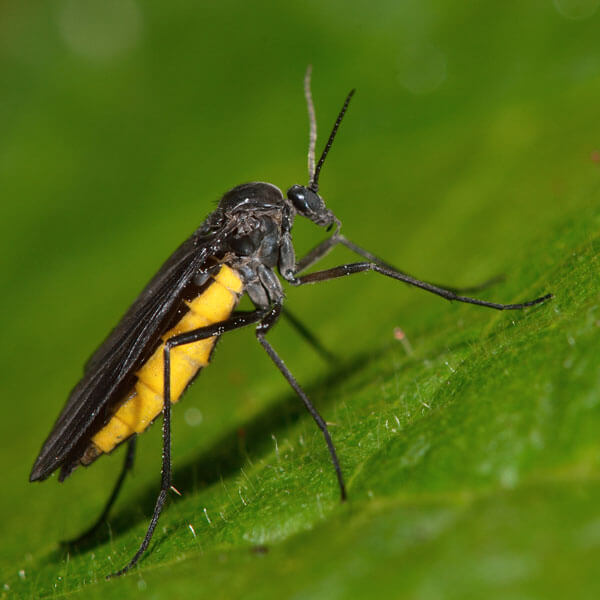Fungus Gnats in Kailua Kona
Fungus gnats are small insects with a delicate appearance, long wings, and spindly legs. They can occasionally become a nuisance in both residential and commercial buildings. This is particularly evident in environments where ferns and other house plants with organic-rich soil serve as breeding grounds. The larvae of these insects primarily feed on fungi and organic matter in the soil but can also pose a problem by chewing on roots. The issue becomes more pronounced in settings such as greenhouses, nurseries, and interior plantscapes. Adults are drawn to lights and are often initially seen near windows or light fixtures.
Fungus Gnat Habitat
In outdoor settings, fungus gnats are drawn to moisture, and issues may arise in regions where the landscape has been excessively watered or in low-lying areas that retain excessive wetness after heavy rainfall. These insects are attracted to light and are often seen hovering near windows. Unlike house flies, fungus gnats are characterized by weak flying abilities, typically remaining close to potted plants. They can also be present in areas with high moisture levels within the home, such as kitchens, bathrooms, laundry rooms, and crawl spaces. This adaptability to various environments emphasizes the importance of managing moisture to mitigate the likelihood of fungus gnat infestations both inside and outside the home.
Fungus Gnat Behaviors, Threats, or Dangers
Adult fungus gnats, while not posing a direct threat to humans or plants, are primarily regarded as a nuisance due to their hovering behavior. The true concern lies with the larvae of fungus gnats, as they can inflict substantial harm to plant roots. Particularly in cases of abundant populations, the larvae may cause significant damage and hinder the growth of plants, especially in seedlings and young plants. Instances of notable root damage and even plant fatalities have been documented in interior plantscapes and houseplants, particularly when thriving in moist, organically rich soil. Wilting houseplants may not be a sign of water scarcity but rather root damage by fungus gnat larvae. If you’re experiencing a fungus gnat issue, contact your local fly control professional.
Need help with Fungus Gnat control?
Need Pest Control Service?
Leave your information below and we’ll be in touch with a FREE quote!
"*" indicates required fields
*During normal business hours. After hours calls will be returned the next business day.





